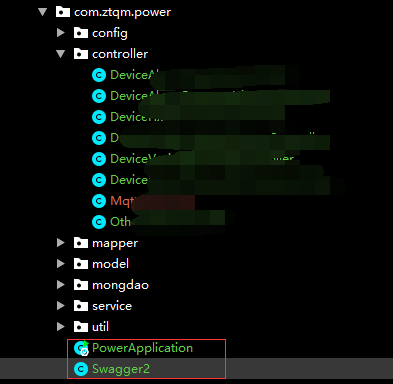一. Swagger是什么?
Swagger是一款RESTFUL接口的文档在线自动生成+功能测试功能软件。
Swagger是一个规范和完整的框架,用于生成、描述、调用和可视化RESTful风格的Web服务。
swagger是一款可以根据resutful风格生成的生成的接口开发文档,并且支持做测试的一款中间软件
二:为什么要使用swaager?
2.1:对于后端开发人员来说
不用再手写WiKi接口拼大量的参数,避免手写错误
对代码侵入性低,采用全注解的方式,开发简单
方法参数名修改、增加、减少参数都可以直接生效,不用手动维护
缺点:增加了开发成本,写接口还得再写一套参数配置
2.2:对于前端开发来说
后端只需要定义好接口,会自动生成文档,接口功能、参数一目了然
联调方便,如果出问题,直接测试接口,实时检查参数和返回值,就可以快速定位是前端还是后端的问题
2.3:对于测试
对于某些没有前端界面UI的功能,可以用它来测试接口
操作简单,不用了解具体代码就可以操作
三 :Swagger 解决了什么?

四:spring boot 集成 Swagger
4.1 : pom文件引入Swagger依赖 如下
<dependency> <groupId>io.springfox</groupId> <artifactId>springfox-swagger2</artifactId> <version>2.7.0</version> </dependency> <dependency> <groupId>io.springfox</groupId> <artifactId>springfox-swagger-ui</artifactId> <version>2.7.0</version> </dependency>
4.2 :编写Swagger的配置启动类,此类与springboot的启动类同级目录

Swagger启动类代码如下 启动类中一定要配好扫描的contorller的全路径

/** * swagger2的配置文件 * http://localhost:30001/swagger-ui.html * @author songbin * @date 2019/5/28 15:37 */ @Configuration @EnableSwagger2 public class Swagger2 { /** * 配置swagger2的一些基本的内容,比如扫描的包等等 * @return */ @Bean public Docket createRestApi(){ return new Docket(DocumentationType.SWAGGER_2) .apiInfo(apiInfo()) .select() .apis(RequestHandlerSelectors.basePackage("com.ztqm.power.controller")) .paths(PathSelectors.any()) .build(); } /** * 构建 api文档的详细信息函数 * @return */ private ApiInfo apiInfo() { return new ApiInfoBuilder() //页面标题 .title("Welcome to Swagger2") //创建人 .contact(new Contact("SongBin", "", "282044525@qq.com")) //版本号 .version("1.0") //描述 .description("您好 这里是 :Swagger2的API文档") .build(); } }
五:书写Controller层 加入注解

/** * 网管实时报警表 添加操作 * @param deviceAlarmProperty * @return */ @ApiOperation(value = "添加 网管实时报警信息",notes = "根据DeviceAlarmProperty对象创建网管实时报警信息") @ApiImplicitParam(name = "deviceAlarmProperty",dataType = "DeviceAlarmProperty",value = "网管实时报警信息实体DeviceAlarmProperty") @RequestMapping(value = "/insert",method = RequestMethod.POST) public JsonUtil insert(DeviceAlarmProperty deviceAlarmProperty){ int num = deviceAlarmPropertyService.insert(deviceAlarmProperty); //如果对象不为空 则重新赋默认值 code 1 ; msg 成功 if(null != jsonUtil){ jsonUtil = JsonUtil.getJsonUtil(); } if(num==0){ jsonUtil= JsonUtil.getError(); } return jsonUtil; }
六:访问 http://localhost:端口号/swagger-ui.html

点击任意链接可以进行测试

